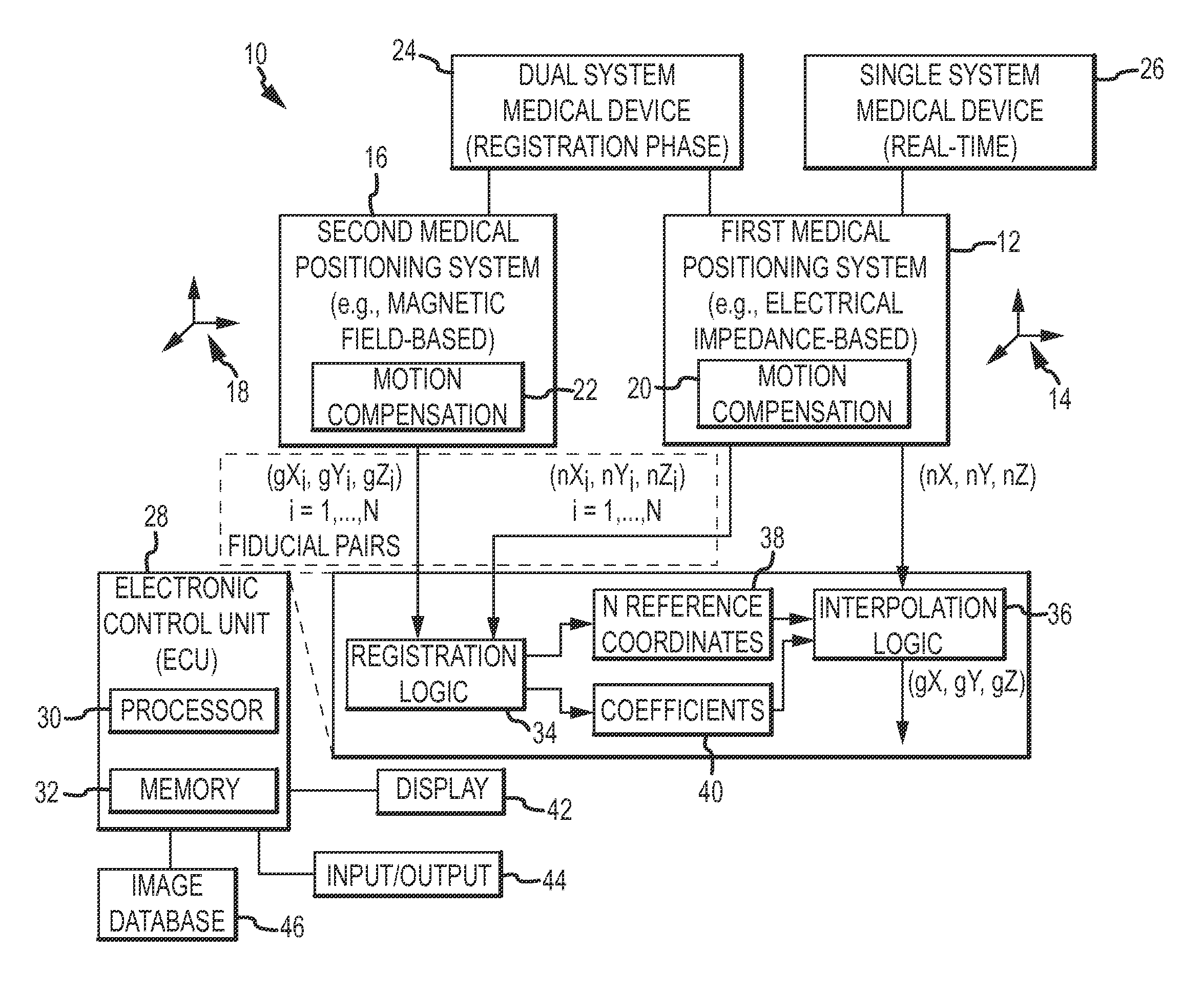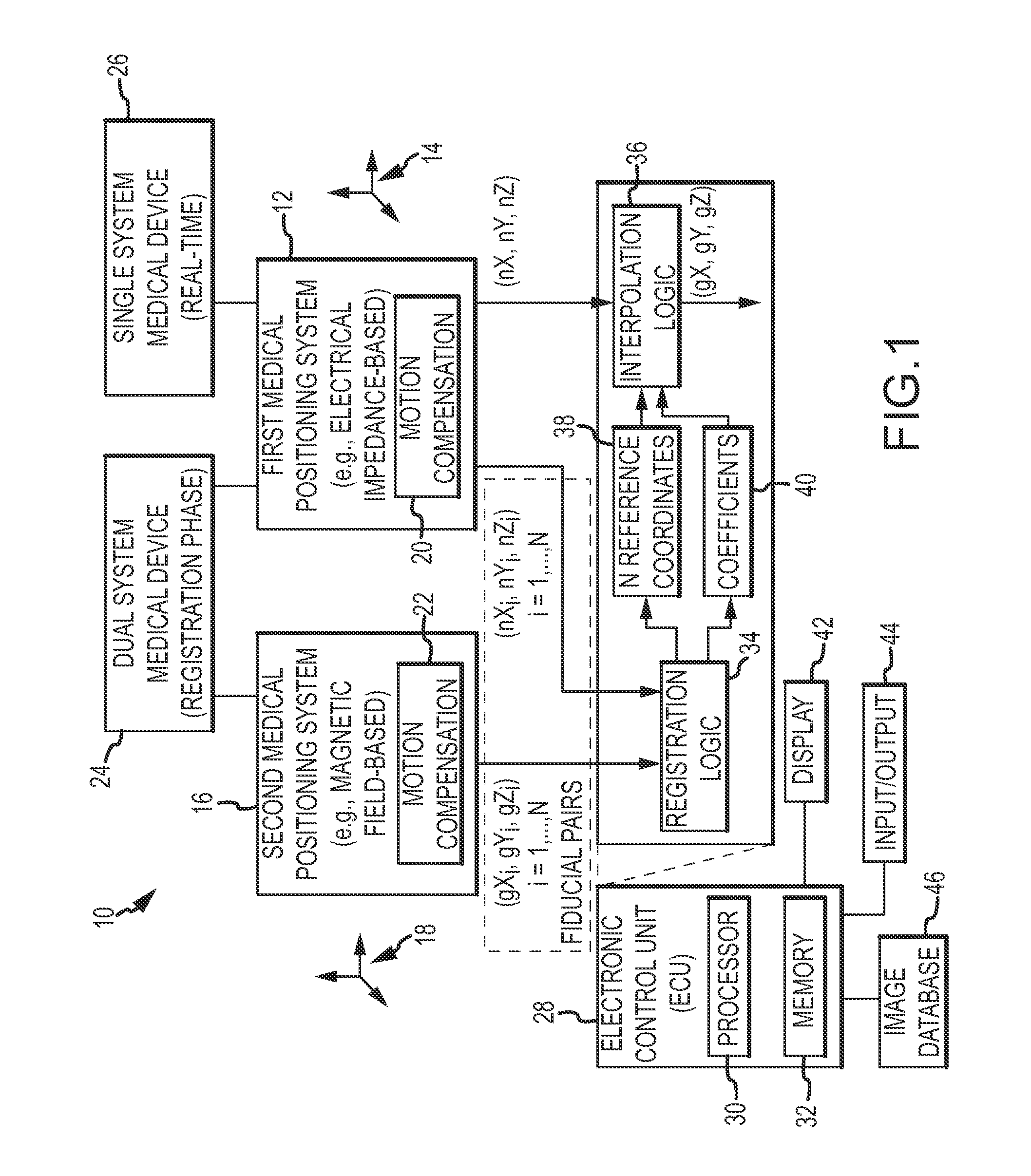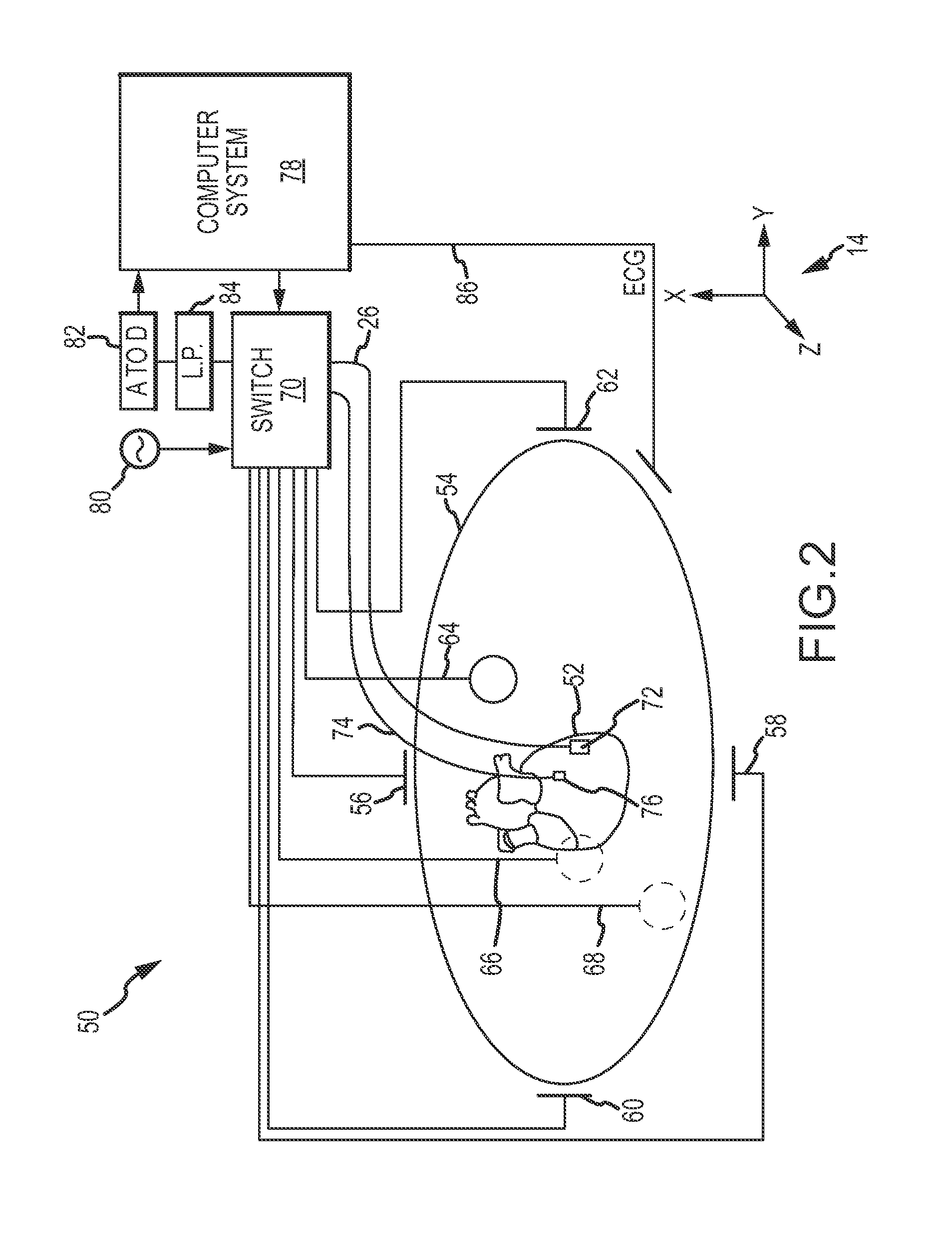Catheter navigation using impedance and magnetic field measurements
a technology of magnetic field and catheter navigation, applied in the field of catheter navigation using impedance and magnetic field measurement, can solve the problems of affecting the accuracy of the navigation system, the distortion of the geometries and representations rendered based on position measurements, and the general limitation of the magnetic field-based positioning system to tracking relatively few sensors
- Summary
- Abstract
- Description
- Claims
- Application Information
AI Technical Summary
Benefits of technology
Problems solved by technology
Method used
Image
Examples
Embodiment Construction
[0018]The following detailed description includes four parts. First, a system for operating a first (e.g., electrical-impedance based) medical positioning system (MPS) together with a second (e.g., magnetic field-based) MPS will be described generally. Second, an exemplary electrical impedance-based MPS will be described in greater detail. Third, exemplary embodiments of a magnetic field-based MPS will be described in greater detail. Finally, a method for operating a first (e.g., electrical impedance-based) MPS in the coordinate system of a second (e.g., magnetic field-based) MPS will be described.
[0019]System for Operating a First MPS With a Second MPS. Referring now to the drawings wherein like reference numerals are used to identify identical components in the various views, FIG. 1 is a block diagram of a system 10 for determining the position of a medical device by operating a first medical positioning system (MPS) (e.g., electrical-impedance based) together with a second MPS (e...
PUM
 Login to View More
Login to View More Abstract
Description
Claims
Application Information
 Login to View More
Login to View More - R&D
- Intellectual Property
- Life Sciences
- Materials
- Tech Scout
- Unparalleled Data Quality
- Higher Quality Content
- 60% Fewer Hallucinations
Browse by: Latest US Patents, China's latest patents, Technical Efficacy Thesaurus, Application Domain, Technology Topic, Popular Technical Reports.
© 2025 PatSnap. All rights reserved.Legal|Privacy policy|Modern Slavery Act Transparency Statement|Sitemap|About US| Contact US: help@patsnap.com



